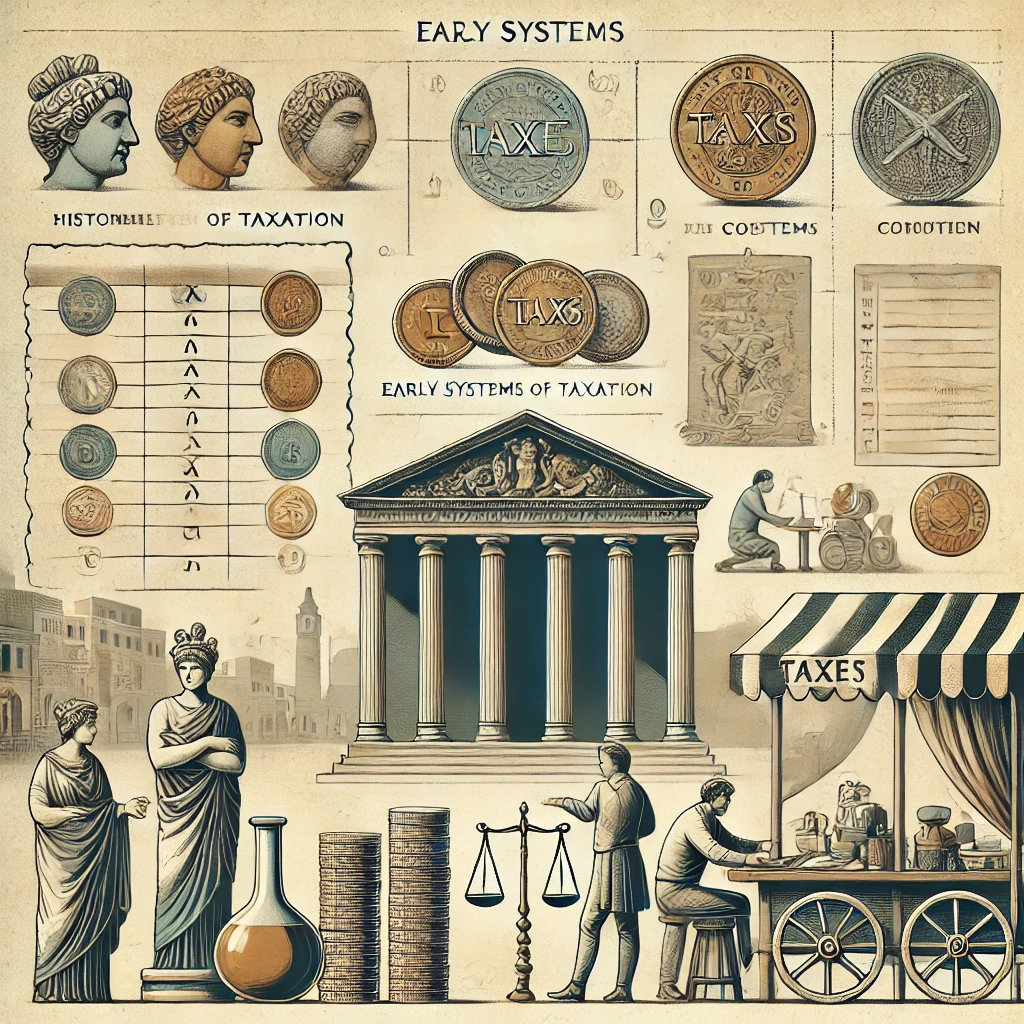
Set Appointment

Before income tax existed, governments funded public services in a few main ways. They charged tariffs on imported goods, collected property taxes from landowners, and placed taxes on products like alcohol and tobacco. Fees for permits and licenses also added to government funds. Sometimes, they even borrowed money to cover costs. These methods provided the money needed for public services like roads, defense, and basic government operations, though resources were often more limited than today.


In ancient civilizations, public services were often funded through systems of taxation that included payments in kind or labor. For instance, in Mesopotamia and Egypt, people contributed a portion of their harvest or labor for large public projects such as building irrigation systems or monuments. These contributions were essentially a tax that helped maintain key infrastructure.
Empires like those of the Romans, Persians, and Mongols relied heavily on tribute systems, where conquered territories were required to pay tribute in the form of goods, money, or labor. These payments were used to fund public services such as roads, military defense, and other government functions.
Many governments relied on customs duties and tariffs to generate revenue. Customs duties were taxes imposed on goods as they entered or left a country. This type of taxation was particularly important in cities with bustling ports or along major trade routes, where merchants had to pay for the right to import or export their goods.
Strategically located cities and empires, like Venice or the Ottoman Empire, made significant income by taxing goods passing through important trade routes or ports. These duties on goods like spices, textiles, and other commodities were essential in maintaining public infrastructure and funding defense efforts.
Property taxes have a long history as a way to fund public services. In many ancient and medieval societies, landowners were required to pay taxes based on the value of their land or the produce it generated. This wealth-based taxation helped fund community projects, armies, and administrative needs.
During the feudal era in Europe, local lords and the manor system played a central role in funding public services. Peasants and serfs were obligated to work on the lord's land and provide a share of their produce. In return, the lord would fund local infrastructure, provide protection, and ensure the upkeep of certain communal resources.
Excise taxes on goods like salt, alcohol, and other essential commodities were common in many societies. Governments imposed these taxes at the point of production or sale, which generated significant revenue without directly taxing income.
Goods that were considered necessities, such as salt in medieval Europe or tea in colonial America, were often subject to taxation. These consumption taxes contributed to the funding of public infrastructure and defense, though they were sometimes controversial due to their impact on the common people.
Another source of public funding was government-owned enterprises. Empires like the Roman Empire controlled important resources like mines and saltworks, generating revenue directly through state-owned businesses. This income was used to finance roads, aqueducts, and other public services.
Governments sometimes maintained monopolies on certain essential goods, such as salt or iron, which allowed them to control production and collect revenues. These public monopolies were an effective way to raise funds without directly taxing citizens' income.
In times of need, especially during wars, governments would take loans or issue bonds to finance their activities. Wealthy citizens and merchants were often encouraged or pressured to lend money to the state, which would be repaid through future revenues.
War often required additional funding, leading to the introduction of special taxes. These could include levies on landowners, merchants, or even common citizens to raise funds for the military and defense infrastructure.
Public services were sometimes funded through voluntary contributions and charitable donations. Religious institutions often played a role, using donations to provide services like education, healthcare, and poor relief. This was particularly common in medieval Europe, where the church acted as a provider of many social services.
Communities would often come together to maintain infrastructure like roads, bridges, and wells. These collective efforts were a way to share the burden of public works without formal taxation, especially in rural or less centralized societies.
Governments also imposed tolls and fees for the use of public infrastructure, such as roads, bridges, and markets. Travelers, merchants, and traders had to pay these fees, which helped fund the maintenance of the infrastructure and other public services.
Fees from licenses and permits also served as sources of revenue. This could include permits for trade, hunting, or other activities that required government approval, ensuring that the state could fund its basic functions without imposing a direct income tax.
How to become a tax preparer